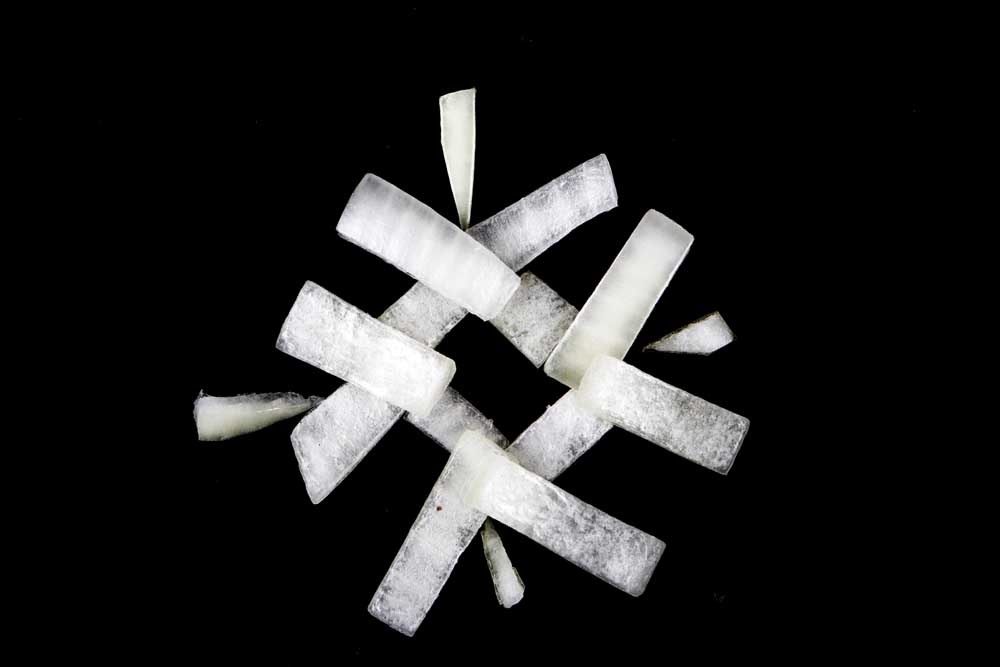Winter onions offer hearty, robust flavors
Published 12:00 am Tuesday, November 15, 2016

- ORIG / 11-10-2016 / Jarod Opperman / The BulletinOnions.
For this lover of autumn, there’s a color that represents the season as clearly as a date on the calendar. It’s a soft, fuzzy gold — like glimmering waves of heat drifting up from a distant beach — a gentle and alluring image that reflects the welcome pulling-up on the hand brake of summer’s wild ride.
These faintly warm days always end with a nip in the air. Indeed, by November, the roar of the farmer’s combine has faded and kitchen rhythms have slowed from the frenetic pace we kept only weeks ago. There’s now time to contemplate fireside chats, crisp white linens, silver service and long-simmering stews. For every one reason it’s sad to leave the sunny days behind, I’ll give you five for moving on — beginning with the smell of cinnamon toast in the brisk morning air, and a lovely glass of pinot sipped under a harvest moon.
Trending
Even kitchen activities have a different feel and are accomplished at a more leisurely pace. And although there’s not quite the vast array of August bounty to fill the produce bins, there are still many offerings, including the tail end of the sweet and hot pepper crop, an impressive array of tomatoes and potatoes and a new collection of onions.
The sweet, tempered varieties of summer are dwindling, of course. The heartier, more robust onions that replace them will take us through winter. Nature designed them to be the keepers that tide us over until the fresh sweet onions of spring come again.
All-purpose yellow globe
This onion is the workhorse of the kitchen, the one called upon most frequently to perform a wide range of tasks. Lower in water content than its spring and summer counterparts, the yellow globe is good for storage and is, therefore, more likely found throughout the year than any other in the onion family. These onions have a strong flavor which makes them the right candidate for long-term cooking, such as in stews and soups.
Spanish sweet onions
This large yellow storage onion is known for its large, spherical shape and mild sweet flavor. It’s higher water content makes it a little less hot and slightly more crisp than the yellow storage onion. In the Pacific Northwest, these onions are usually referred to as Spanish sweets, but they are not to be confused with the Walla Walla sweet, which is strictly a spring-into-summer onion. The Spanish sweet onion will keep into March, if treated well.
Trending
Red onion
Although most people think of Bermuda onion as the red onion, that particular variety died out in 1985. The red onion is similar in character to the Spanish onion — slightly sweet, with a crisp character. Although the red onion is a vibrant addition to uncooked dishes, its red pigment is unstable under heat and nonacid conditions, which means that the color is lost during cooking (or turns a bluish-greenish color), unless a bit of vinegar, wine or lemon juice is added.
Cippoline
Pronounced chi-po-li-nee, this zesty little white onion gained in popularity as an Italian import, but is becoming increasingly more available in the states. You can recognize it by its small, squat dimension.
Pearl onions
Generally speaking, any white bulb onion you encounter that measures no larger than 1¼ inches in diameter is considered a pearl onion. People always seem to want white pearl onions; however, yellow or red would also be considered pearls as long as they measured up size-wise.
Boiling onions
Like the pearl onion, the boiling onion is determined by its size. To be considered in this category, the bulb must be just about golf-ball size. Typically, they’re white, although on occasion you’ll encounter red or yellow ones as well.
White storage onions
Although hot and strong in flavor, these are milder than the yellow storage onion, with a slightly cleaner, crisper character.
— Jan Roberts-Dominguez is a Corvallis food writer, artist and author of “Oregon Hazelnut Country, the Food, the Drink, the Spirit,” and four other cookbooks. Readers can contact her by email at janrd@proaxis.com, or obtain additional recipes and food tips on her blog at www.janrd.com.








